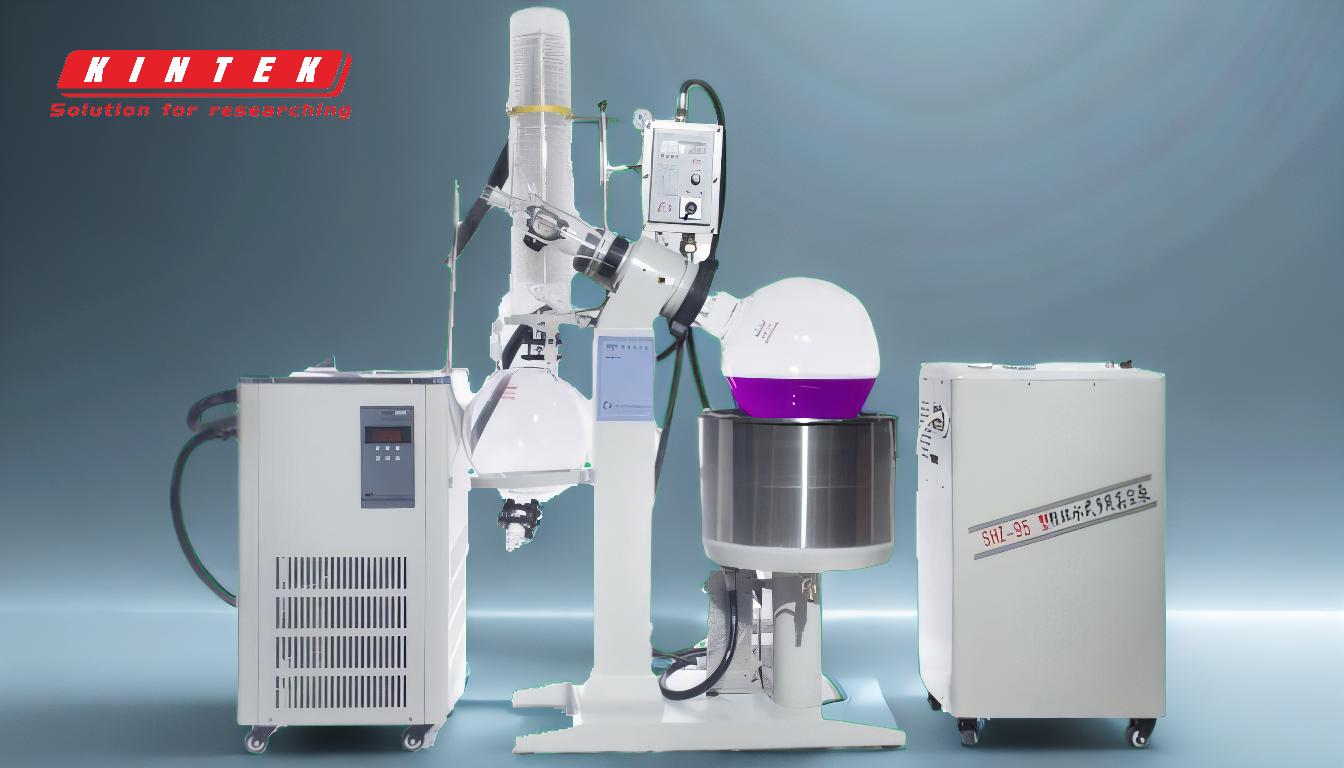Short path distillation and molecular distillation are related but distinct techniques used for separating and purifying compounds. While both operate under reduced pressure and involve the sample traveling a short distance, molecular distillation is a specialized form of short path distillation that uses extremely low vacuum pressure (typically less than 1x10^-2 mbar). This ensures that the mean free path of molecules is longer than the distance between the evaporator and condenser, eliminating back-pressure. Short path distillation, on the other hand, is a broader analytical technique that operates at reduced pressure but does not necessarily achieve the same ultra-low vacuum levels as molecular distillation. Both methods are compact, efficient, and suitable for heat-sensitive compounds, but molecular distillation is more specialized for applications requiring extremely precise separation under ultra-low pressure.
Key Points Explained:

-
Definition and Relationship Between the Two Techniques:
- Short Path Distillation: A distillation technique where the sample travels a short distance under reduced pressure. It is compact, efficient, and operates at lower temperatures, making it ideal for heat-sensitive compounds.
- Molecular Distillation: A specialized form of short path distillation that uses extremely low vacuum pressure (typically less than 1x10^-2 mbar). This ensures that the mean free path of molecules is longer than the distance between the evaporator and condenser, eliminating back-pressure.
-
Key Differences:
-
Vacuum Pressure:
- Molecular distillation operates at ultra-low vacuum pressures, which are significantly lower than those used in standard short path distillation.
- Short path distillation operates at reduced pressure but does not necessarily achieve the ultra-low vacuum levels of molecular distillation.
-
Mean Free Path:
- In molecular distillation, the mean free path of molecules is longer than the distance between the evaporator and condenser, ensuring no back-pressure.
- In short path distillation, the mean free path is not explicitly controlled to exceed the evaporator-condenser distance.
-
Application Specificity:
- Molecular distillation is used for highly precise separations, particularly for compounds that degrade at higher temperatures or require ultra-pure conditions.
- Short path distillation is more versatile and can be used for a broader range of separations, though it may not achieve the same level of precision as molecular distillation.
-
Vacuum Pressure:
-
Operational Advantages:
-
Compactness and Efficiency:
- Both techniques are more compact and faster than conventional distillation methods, with separations often completed in seconds.
-
Temperature Sensitivity:
- Both methods operate at lower temperatures, making them suitable for heat-sensitive compounds.
-
Waste Reduction:
- Both techniques reduce waste and require simpler equipment compared to traditional distillation methods.
-
Compactness and Efficiency:
-
Practical Considerations:
-
Equipment Complexity:
- Molecular distillation requires more specialized equipment to achieve and maintain ultra-low vacuum pressures.
- Short path distillation is simpler and easier to use, making it more accessible for routine applications.
-
Cost:
- Molecular distillation systems are typically more expensive due to the need for advanced vacuum technology.
- Short path distillation is more cost-effective for general-purpose use.
-
Equipment Complexity:
-
Applications:
-
Molecular Distillation:
- Used in industries requiring ultra-pure separation, such as pharmaceuticals, essential oils, and high-value chemical production.
-
Short Path Distillation:
- Used in a wide range of industries, including food processing, cannabis extraction, and general chemical purification.
-
Molecular Distillation:
In summary, while short path distillation and molecular distillation share similarities in their operating principles and advantages, molecular distillation is a more specialized and precise form of short path distillation, distinguished by its use of ultra-low vacuum pressure and longer mean free path of molecules. Understanding these differences is crucial for selecting the appropriate technique based on the specific requirements of the application.
Summary Table:
| Aspect | Short Path Distillation | Molecular Distillation |
|---|---|---|
| Definition | A distillation technique under reduced pressure, ideal for heat-sensitive compounds. | A specialized form of short path distillation using ultra-low vacuum pressure. |
| Vacuum Pressure | Reduced pressure, but not ultra-low. | Ultra-low vacuum pressure (<1x10^-2 mbar). |
| Mean Free Path | Not explicitly controlled to exceed evaporator-condenser distance. | Longer than evaporator-condenser distance, eliminating back-pressure. |
| Application | Versatile; used in food processing, cannabis extraction, and chemical purification. | Highly precise; used in pharmaceuticals, essential oils, and high-value chemical production. |
| Equipment Complexity | Simpler and more cost-effective. | Requires specialized, more expensive equipment. |
Need help choosing the right distillation technique? Contact our experts today for personalized guidance!
















